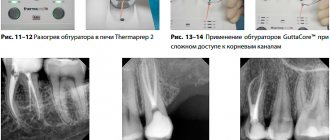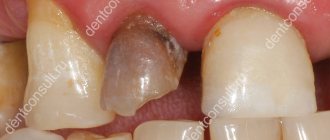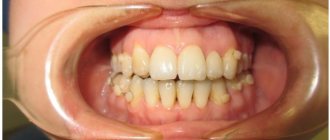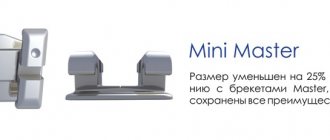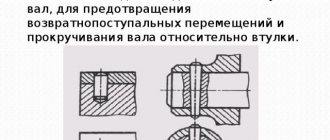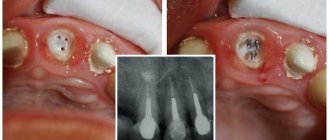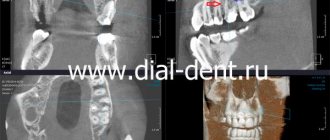An option for careful tooth restoration if the crown has collapsed to the base
Modern dentistry allows you to preserve natural teeth even when they are quite damaged. It is quite natural that one has to work very carefully with such problematic units, because the service life of the restored teeth will depend on how well the doctor does his work. And here the stage of endodontic treatment and canal filling will be of decisive importance. Today, filling canals with gutta-percha pins is considered one of the most reliable methods. And at the same time very affordable. What kind of technology is this, what are its features and advantages? We invite you to consider further.
What is a pin
Before moving on to what gutta-percha pins are in dentistry, let's basically understand what a pin is. This is a kind of rod or structure that has the necessary hardness to become a support for a badly damaged tooth that needs restoration due to deep caries, pulpitis, and traumatic injuries. This support allows you to avoid tooth extraction, restore it and extend its service life. This rod is placed and strengthened in the root system; it can act as a support for an artificial crown or prosthesis.
Some people call not only pins, but also implants rods. Indeed, these two designs are somewhat similar to each other, because both allow for high-quality tooth restoration. But they also have fundamental differences: the implant is installed in the patient’s jawbone in the absence of a tooth and performs the functions of a root. The pin is installed in the root of a natural tooth in order to give it a chance to continue serving its owner.
Dental practice has long used metal and fiberglass rods. But due to their invariably solid state, they could not provide one hundred percent sealing of the channels and all their branches, and often led to complications. They were used in conjunction with filling pastes, which also shrink over time, dissolve and form voids. However, today doctors have found a more advanced method that allows them to achieve high quality indicators of endodontic treatment. Specialists began to use gutta-percha points for teeth in their work.
Indications and contraindications for installation
The gutta-percha point is placed in the root canal rather than in the bone. That is why the procedure has virtually no contraindications.
Which is better: pin or tab?
Recently, dentists have been using various methods to restore the integrity of teeth.
Restoring a tooth crown using a pin is used in the following cases:
- The presence of great destruction. In this case, it may not be possible to continue further treatment.
- Fixation of molars. When the inflammatory process spreads to periodontal tissue.
- Replantation of teeth.
- Partial or complete destruction of the outer teeth, as they are used as a support during the installation of orthopedic structures.
Pins are also used to reinforce the inflammation of a tooth in which the nerve endings have been removed.
But in order to install the pin, the doctor must conduct an examination of the oral cavity in order to determine the presence of the following conditions:
- The canal of the damaged tooth must be completely sealed.
- The thickness of the root walls should not be less than 2 mm.
- The diameter of the dental canal should be sufficiently large and have good permeability.
In addition, there should be no: inflammation, root cysts and other diseases characterized by the destruction of soft and hard tissues of the oral cavity.
Contraindications for the use of gutta-percha points include:
- Insufficient thickness of root walls.
- Poor patency of the canals, which makes it impossible to completely seal them.
- The length of the root is less than the length of the crown.
- The presence of concomitant inflammatory infectious diseases.
The possibility of installing pins is determined by the attending physician after a thorough examination of the oral cavity. In case of various diseases, the dentist first carries out treatment. Only after the inflammatory process has stopped is the procedure for installing gutta-percha pins performed.
What is gutta-percha in dentistry?
Gutta-percha material has been used in dentistry for more than a hundred years, used for the manufacture of temporary fillings and for endodontic treatment of canals. The word "gutta-percha" means flexible and pliable, and gutta-percha, which is used in dentistry, is a raw material that people obtain from the sap of the Isonandra gutta tree. Interestingly, chemical gutta-percha itself consists of a natural isomer of rubber or polyisoprene, but unlike ordinary rubber, it is still less elastic. Also, in terms of its properties and composition, some compare it with latex.
In its pure form, natural gutta-percha is not used in dentistry. To obtain the required consistency, experts add additional components to it:
- wax and resins that help soften the material,
- metal sulfate: this component is necessary so that the resulting material has good radiopacity, i.e. it will be clearly visible on x-rays, which makes it easier for doctors and allows them to control the treatment process at all stages,
- oxide or zinc oxide: the frame of the product is created from it and it makes up the largest percentage - about 70%. In addition, this element combines well with various sealers (fillers), without which the use of gutta-percha pins would not be so effective,
- dyes and antioxidants.
The percentage of natural gutta-percha in the composition of gutta-percha pins is no more than 20-22%.
On a note! Mentioning the composition of such rods, it is also worth noting that there are two modifications of gutta-percha - alpha and beta. The first has a lower melting point and, when exposed to not very high temperatures, becomes very plastic and sticky, but has low permeability. But the beta form melts at higher temperatures and when heated above 60 degrees it becomes ideal for filling root canals - it is this form that is used for the manufacture of gutta-percha points.
Features of the material
Gutta-percha is perhaps the most popular solution for high-quality filling of dental canals and artificial restoration of teeth through prosthetics.
It copes with its main task perfectly, and over more than a century-long history of use it has proven itself to be only good.
The component is obtained from the coagulated nectar of tropical shrubs and trees. In terms of its structural content, it is analogous to natural rubber and is characterized by high strength.
It is recommended both for filling on a temporary basis and during endodontic procedures.
As for the pins, the specific gravity of the material in question in them is no more than 20–22%. Depending on the content, the characteristics of the product as a whole change.
The distinctive property of the material lies in its unique ability to provide a sterile environment around itself, allowing the organ to be preserved.
What are gutta-percha pins needed for: indications for use
Having read the description of the properties of a material such as gutta-percha, you probably already understood that pins made from it have high plasticity and, when exposed to high temperatures, are able to penetrate deeply even into the most curved canals and all their branches. Such rods are used in dental practice because they allow high-quality sealing and strengthening of the root canals of the tooth, their reliable obturation (translated from the Latin obturatio - clogging), reducing the risk of developing subsequent complications and ensuring good results for many years to come.
So, the use of gutta-percha points is justified if:
- the tooth is more than half destroyed,
- the tooth has only the root left,
- reliable support for an artificial crown or prosthesis is required,
- The patient has curved root canals.
Staging methods
Several methods are used in the production process:
- hot – the heated component is injected directly into the root zone. The liquid mixture is completely located inside, uniformly filling the space and preventing the appearance of voids. This technology is also called the volumetric principle of filling;
- cold - the method is not as popular as the previous one, since there is a risk that the rods will not completely fill the root area and there will be branches where they cannot reach. This can infect the root of the tooth and provoke the development of such a dangerous disease as periodontitis.
The canals are filled in the following ways:
- single rod option – an ideal solution for those doctors who have a good practice of treating only with paste.
It has a serious drawback - this method guarantees the filling of the channel area itself, without including its branches. There are voids formed there.To avoid this, a special paste is used - a sealer - and a pin of a suitable size is implanted, after which it is shortened to the borders of the orifice;
- lateral condensation – the canal is first thoroughly dried, then treated with paste and only then a pre-prepared structure is implanted.
Its final part is generously impregnated with sealer. The device is tightly fixed in the cavity, trying to connect as much as possible with its walls, achieving condensation of the material.As a result of such actions, space is freed up for additional rods that will fill the channel to the end.
All ends are processed with a hot tool, and gutta-percha is pressed to ensure high-quality condensation formation. The downside is the difficulty of filling the branches, and as a result, the risk of complications;
- thermomechanical injection technique is not used very often, since it is associated with a large number of difficulties in the rehabilitation process.
The principle is to inject gutta-percha using a syringe. Disadvantage: the recovery process takes longer and is associated with physical discomfort; - softening the component - using a special “Thermafil” system during the manipulation process; when heated, the mass forms a liquid.
The advantage of the technology is the highest quality filling of the cavity of the canals and their branches, which guarantees a more durable filling. In addition, the procedure is carried out quite quickly, and the mass itself heats up to the desired temperature in just a few seconds.
Types of products
When making rods from a material such as gutta-percha, specialists adhere to certain standards and rules. All factory-produced models (and they are produced by different manufacturers) comply with the standards of the country in which the manufacturer is located. Thus, German companies produce products according to the standards of the German Institute for Standardization DIN, American companies - to ADA (American Dental Association) standards, Russian manufacturers - to GOST standards developed by the All-Russian Scientific Research Institute for Certification. All gutta-percha points are also manufactured in strict accordance with ISO standards.
In general, according to types, experts divide them into two large groups: standard (main) and non-standard or additional gutta-percha points. The first group has standardized sizes: 15, 20, 25, 30, 35, 40, 45, 50, 55, 60, 70, 80, 90, 100, 110, 120, 130, 140. Such products are color-coded and fully comply standards of cutting instruments that doctors use in their work according to ISO. For the convenience of dentists today, standardized types of structures also have special millimeter markings along the length.
As for additional models, the length and width of such gutta-percha pins also vary. There are only five types: there are models marked XXF (super-thin), XF (very thin), F (thin), M (medium size), L (thick or large). Unlike conventional models, they are all cone-shaped and tapered at the end. The cones of such products can also have different sizes: from 0.04 to 0.012. Such models are mainly used according to the vertical condensation installation method, which you will find information about below.
The doctor selects the size and type of product based on the clinical situation.
Reasons for use
In dentistry, special pastes have been used for filling open canals for a long time. They had a number of advantages, but over time the patient had to return to the dentist to restore the filling. The material from which the paste was made deteriorated quite quickly.
Why can our articles be trusted?
We make health information clear, accessible and relevant.
- All articles are checked by practicing doctors.
- We take scientific literature and the latest research as a basis.
- We publish detailed articles that answer all questions.
But today, doctors use gutta-percha pins, which, unlike paste, are more resistant to the influence of external factors and are easy to use.
The process of filling an open canal with gutta-percha occurs without difficulty. However, it is possible to remove it for re-treatment.
Gutta-percha does not cause an allergic reaction and does not irritate the canal walls. This property of the material allows filling to be performed on patients for whom other types of pins are not suitable.
In addition, gutta-percha does not deteriorate over time and thus ensures reliable hermetic fillings for many years.
Advantages of gutta-percha rods
Let's take a closer look at the positive properties of gutta-percha pins:
- biological inertness: this quality is even better than that of such noble metals as gold and silver. This property ensures the absence of allergic reactions in the patient,
- ability to condense: after hardening, this material adheres very tightly to dentin,
- stability: throughout the entire service life, the material does not change its volume, practically does not shrink and does not dissolve,
- wear resistance: the material does not collapse,
- tightness: gutta-percha is able to fill all branches of the root canals and protect them from penetration of infection, moisture,
- softening when heated: this gives doctors the opportunity to evenly distribute it along the entire length of the canals and give it the desired shape. This property also facilitates the doctor’s work, allowing him to quickly and easily perform all manipulations using special syringes and rods for introducing the material,
- no toxicity,
- radiopacity: a specialist always has the opportunity to monitor the quality of work by taking an x-ray,
- possibility of removing material if necessary.
Another advantage is that treatment using these structures today is accessible to a wide range of patients due to the low cost of such material as gutta-percha.
Stages of filling
High-quality canal filling will help prevent the development of periodontitis and other unpleasant complications. The specialist’s main task is to fill the canal and make it completely sealed.
Root canals are quite narrow, so they are specially widened before filling. The filling process consists of several stages, including:
- removal of tissue affected by caries;
- removal of pulp;
- increasing the diameter of the channel using mechanical processing;
- treatment of the cavity with special medications;
- insertion of sealer and pin;
- cutting off the top of the rod with a hot tool;
- temporary filling.
The main difficulty when filling canals is that the clamps are quite thin and flexible. There are several methods for filling channels. They all have their own characteristics and indications for use.
Disadvantage information
- poor adhesion to hard tooth tissues: the adhesive properties of the material are very weak; in order to enhance the quality of adhesion, specialists practice installing gutta-percha pins together with root sealants and sealers. If this rule is violated, then there is a high probability that the flexible rods may move after installation,
- lack of bacteriostatic effect: due to its biological inertness, i.e. passivity, the material does not promote the regeneration of tooth tissue, it does not release useful active compounds,
- difficulties during installation: in order to work with such a flexible and plastic material and install it efficiently, the doctor must have a high level of professionalism. When preparing for procedures, the rods can stretch, which makes it difficult for the doctor to control the working length of the canal later. Particular difficulties are caused by the flexibility of the rods when filling thin canals, because... rods up to size 35 do not have any noticeable rigidity and are too plastic,
- uneven distribution of load on the root, which is fraught with its rapid destruction.
General stages of tooth treatment using gutta-percha points
Filling canals using gutta-percha pins usually takes place in several stages.
Stage 1: drilling out carious lesions and damaged hard tissues using a bur.
Stage 2: removal of the tooth nerve using pulp extractors.
Stage 3: preparation of root canals. At this stage, the doctor first measures their length using tools such as depth gauges. Next, the specialist widens the mouth of the canals using tools called drills and K-files. Reamers are also used for root canals. Next, the doctor performs an antiseptic treatment of the work areas.
Stage 4: determining the type and size of the required pin. To determine the size, the specialist uses tools suitable for this purpose. For example, “Verifer” is a kind of flexible needle that tapers at the end.
Stage 5: selecting a sealer (filling paste) and filling the canal with it. The sealer simply must be used in conjunction with gutta-percha pins, because otherwise it will be impossible to ensure high-quality sealing and protection of all branches from moisture and bacteria, as well as reliable adhesion of flexible rods in the root system. The sealer also acts as a good lubricant, allowing the flexible gutta-percha rod to pass easily through hard-to-reach areas. Filling pastes differ in their composition; they can be created on the basis of epoxy resin, glass ionomers, gutta-percha, calcium hydroxide, zinc oxide, and polyesters. The sealer is placed in the designated areas using channel fillers.
Stage 6: installation of the pin. Once the structure is correctly placed along the entire length of the canal, the doctor cuts off its upper part, located at the level of the mouth, using an instrument heated to high temperatures. Find information below about installation methods for flexible gutta-percha products.
Important! Due to the high temperature nature of the material, it cannot be sterilized, but it can be disinfected and decontaminated before use using isopropyl alcohol or two percent chlorhexidine, or by immersion in sodium hypochlorite. It is simply necessary to do this, because... the material will come into close interaction with the periapical tissues of the tooth.
Stage 7: installation of a temporary composite filling. Why can’t you immediately install a permanent one? A professional doctor needs to make sure that the endodontic treatment was carried out efficiently, all cavities are sealed hermetically, and the patient will not subsequently experience any complications requiring tooth retreatment.
Stage 8: installation of a permanent filling. You can begin installing a permanent filling 4-5 days after endodontic treatment has been carried out. First, the doctor will conduct an x-ray control (it is also necessary to conduct x-rays at all stages of endodontic treatment). After a permanent filling has been placed, it is also recommended to think about strengthening the tooth with an artificial crown, especially if the damage has been significant and the filling is large enough. This measure will help preserve the results of treatment for many years.
What are they made of?
A gutta-percha pin is made in the form of a rod and is used to restore a dental crown. The main material is zinc oxide. It makes up from 59% to 76% of the total mass. Also includes:
- Beta-gutta-percha from 18% to 22%.
- From one to 4% are plasticizer candles.
- Radiocontrast agents up to 1.5%.
- Antioxidants.
- Biological dyes.
All about the pin-stump inlay
The pin is combined with silvers, which include Evengol. This is due to the presence of zinc oxide. Substances form a homogeneous mass by bonding with each other.
The presence of dyes in the composition allows you to give the pins a color in accordance with its size.
Gutta-percha filling techniques
In fact, there are quite a lot of methods for filling with gutta-percha pins. All of them can be divided into two groups: cold and hot methods.
In the first case, the specialist introduces cold material into the root canal and only then heats it. In the second case, the material will be preliminarily exposed to high temperatures and will be introduced into the root canal in a heated state. In practice, specialists use “hot” methods more often because they are more reliable. But with “cold” ones, there is a possibility that not all cavities and branches of the canals will be filled, which will subsequently lead to their infection and the development of a disease such as periodontitis.
Let's take a closer look at all the techniques that use cold and hot gutta-percha.
First, let's look at cold material installation methods.
"One pin" method
In the literature, this method is sometimes called the monopin technique1, because its implementation requires only one pin, as well as a sealer. First, the doctor develops the root canal (passes, expands, disinfects), then applies a sealer as a base, after which he inserts a rod of a suitable size. The paste fills all the gaps, and the protruding ends of the rod are removed with a hot tool (a special nozzle, a smoothing iron or a regular probe is used for this purpose, which are heated to 150-200 degrees). After which the doctor follows the standard procedure and fills the tooth.
Lateral or side condensation method
The technique is very popular and effective for filling wide root canals. To implement it, you again need a sealer and a set of standard gutta-percha rods (4-5 or more pieces may be required). First, the doctor treats the canal walls with filling paste, then, one by one, pins are inserted into the mouth and compacted, moistened at the end with sealer. Each subsequent pin is condensed by a special sealing tool spreader (it is also called a side seal) to the walls of the canal and enters it to an ever-smaller depth - this happens until the entire lumen is filled and compacted (when this happens, the spreader tool is no longer possible will be pushed into the channel). Each installed rod is cut off from above with a hot tool. The mouth is closed from above with heated gutta-percha.
The method, however, has a number of disadvantages, for example, during its implementation, quite strong pressure is applied to the root of the tooth, which can lead to damage if the doctor is unprofessional. The disadvantage of the technique is that in the apical apical region the pin cannot guarantee a high level of sealing, because it cannot be heated here.
On a note! There are two more methods of filling with cold gutta-percha pins, but these days they are not used due to low efficiency and a high risk of complications. For example, thermomechanical condensation technology involves the use of a rotating tool to place rods into designated areas. However, this mechanism increases the risk of canal damage. Another method involves softening the material under the influence of chemical activators, which also have a very negative effect on tooth tissue.
Now let's look at techniques that involve filling with preheated gutta-percha.
Hot vertical condensation method
This technology is very complex and requires a lot of time, as well as high professionalism of the doctor. However, it has a significant advantage over other methods - it gives really good results, because provides three-dimensional filling of the root canal. To implement this type of endodontic treatment, the doctor will need to be equipped with special equipment that has a spreader attachment for heating gutta-percha and a plugger tool for carrying out vertical condensation. At all stages, the doctor selects pluggers of different sizes to compact the material.
What is the essence of the method: the doctor gradually fills the root area - first the lower third of the root, then the middle and only then the coronal part. The specialist takes the pin and immerses its tip in the sealer, after which the rod is compacted into the root canal. Next, using a heated nozzle, the specialist cuts off the tip of the rod at the level of the canal mouth and gradually condenses the heated material, slowly immersing the heated nozzle into it. This approach makes gutta-percha as flexible as possible, and it, in turn, literally repeats all the anatomical features of the root system and hermetically fills all cavities, including lateral branches, leaving no gaps. Throughout all stages of treatment, the doctor takes an x-ray, and at the control stage fills the very upper part of the canal with heated gutta-percha.
Thermafill method
This is the technology of so-called “volumetric filling”. To implement the method, special equipment and a heating oven are also required. Thermafil is a special plastic rod on which gutta-percha is applied. To activate it, the doctor first places the material in the oven for 15 seconds, then removes it and places it under pressure into the tooth cavity. As a result, the material easily fills even the smallest branches and curved cavities, and the rod itself compacts and compacts the heated gutta-percha.
These are the most popular and effective methods today. However, in some dentistry, doctors administer gutta-percha preheated to 200 degrees using syringes or injections. But this approach does not guarantee hermetic filling of all cavities. In addition, it involves a rather difficult rehabilitation period associated with physical discomfort for the patient.
Product characteristics
Gutta-percha has gained widespread use since the late seventies of the last century, and maintains its position to the present day.
Of course, during the process of prosthetics, complications occur when working with this material.
But, in the vast majority of cases, this is due to incorrect actions of the dentist or the specific structure of the tooth . It is advisable to consider in more detail the main characteristics of the component.
Advantages and disadvantages
Gutta-percha has many advantages:
- it has a high rate of inertia - an order of magnitude greater than that of precious metals such as gold or silver;
- the material is capable of releasing condensation , which ensures a high-quality fit of the rod to the dentin, filling the space and compensating for shrinkage processes at the time of hardening;
- maintains stability - once it has passed into a solid state, the material maintains its volume constant;
- fits perfectly with periapical fragments of surrounding tissue;
- does not provoke allergic reactions;
- has pronounced antibacterial characteristics;
- has a unique quality - softening under the influence of high temperatures , gradually turning into a liquid state. Thus, its use as an injection is acceptable;
- low toxicity;
Gutta-percha points are waterproof and radiopaque.
There are also disadvantages:
- the substance is absolutely neutral and does not differ in its ability to release active elements and compounds to the natural tissues of the tooth;
- a pin made of this material limits the ability to control its insertion into the organ cavity, which can cause deformation;
- the rod causes difficulties in fastening if the root canal is very narrow;
- During the installation process, the use of root sealant is required, since the structures are not adhesive to the walls of the cavity.
Features of building up a broken front tooth and the material used.
Let's find out together here what to do if a piece of a tooth breaks off.
At this address https://www.vash-dentist.ru/krasota-i-uxod/narashhivanie/klyikov.html we’ll talk about indications for canine extensions.
Kinds
Gutta-percha endodontic structures are distinguished into the following types:
- standard – sizes are produced in strict accordance with European quality standards for dental instruments and devices;
- non-standard - have an atypical shape, taper. They are slightly wider and shorter than regular rods and have a slightly pointed end.
Compound
The composition of gutta-percha points includes:
- beta-gutta-percha component - they account for a fifth of the total mass of the structure;
- zinc oxide is a kind of frame for the product and its specific share is at least 73%;
- x-ray contrast connections - despite the fact that their percentage is negligible (no more than one), without them the device will not be so strong;
- pigment dyes, antioxidants - they account for the remaining volume.
The thickness of the model is indicated on the packaging, where it is assigned a specific number and marking color. Based on the general clinical picture of the pathology, the specialist determines the appropriate option.
